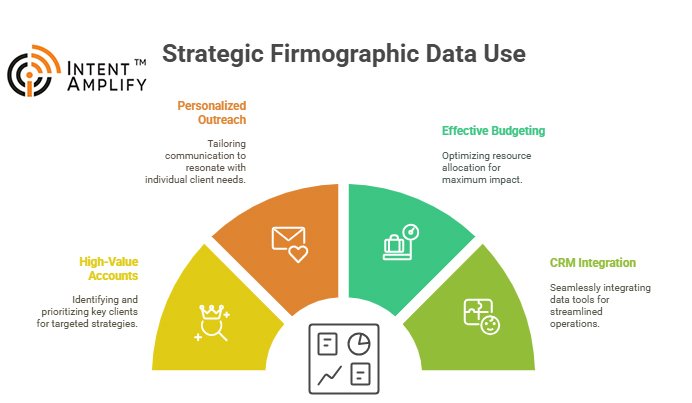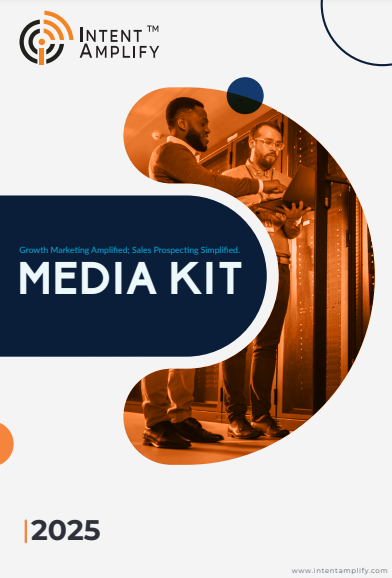
How to Use Firmographic Data to Target High-Value B2B Leads in 2025
- Last updated on: June 5, 2025
B2B businesses prefer using their own first-party and firmographic data to achieve the outcomes they desire.
Regulations and privacy restrictions have been tightened frequently. To comply with this, marketers are seeking first-party data as a reliable source for safe and responsible campaigns.
In a July 2024 Pipeline360 survey, 67% of B2B marketers identified data compliance and accuracy as the highest priority. Also, 84% of world marketers stated they employ customer, first-party, and transactional data to make audience insights, a March 2024 Salesforce survey reported.
But to successfully interpret this information into revenue streams, marketers are now overlaying firmographic data of company size, industry, location, and revenue into it in order to identify high-value accounts. With first-party intelligence enriched by firmographic intelligence, B2B groups can segment and prioritize outreach to companies that fit their ideal customer profile (ICP).
This blending of secure, compliant customer data with firmographic targeting allows for a smarter, more strategic method of uncovering, engaging, and converting the appropriate B2B leads.
What is Firmographic Data?
Firmographic data is the B2B equivalent of demographic data. More than defining individual characteristics, it defines business aspects.
In other words, it’s the organized set of information talking about a company’s identity, size, structure, and industry context.
This is in the same way sales teams use demographics to target consumer segments, B2B marketers use firmographics to segment, rank, and customize outreach to companies.
Important Firmographic Data Points Are:
- Type of Industry or Sector (e.g., SaaS, Healthcare, Manufacturing)
- Company Size (No. of employees/ revenue)
- Geographic/ physical Location (region, country, or city-based targeting)
- Growth Stage (startup, mid-market, enterprise)
- Ownership Type (public, private, government, non-profit)
- Tech Stack (typically included in enriched firmographic profiles)
In 2025, firmographic data not only filters, but it’s enriched by Artificial Intelligence (AI). This sifted data is frequently merged with other data layers such as intent, technographics, and behavioral signals for further precision.
Now that we’ve talked about what firmographic data is and how it helps define your ideal customer profile, the next question is: how does it actually translate into results for modern B2B teams?
In 2025, firmographic data is not only a reference checksheet it’s actively powering go-to-market strategies, sharpening outreach, and streamlining budget allocation across marketing and sales.
Let’s see how companies are using this data to transcend mass targeting and enter the age of account-level precision.
How Marketers and Sales Teams Leverage Firmographic Data in 2025
- Focus on High-Value Accounts
Sales teams sift through thousands of accounts and land on the highest-value ones particularly those that are similar to historical closed-won deals. This is possible with the help of firmographic filters such as employee size, industry, and region.
- Personalizing Outreach at Scale
A cybersecurity company marketing to Southern California mid-size healthcare organizations will not send identical messaging to a New York fintech company. Firmographics allow for customized messaging by the recipient company’s characteristics.
- Budget Allocation Effectively
B2B marketers currently align firmographic segments (such as ARR or industry) with funnel stages and allocate ad budgets thereby. This avoids waste and maximizes ROI on paid efforts.
- CRM and Automation Tool Integration
Tools such as HubSpot, Salesforce, and Marketo now offer integrated or API-based firmographic enrichment. This year, 2025, the data updates lead records automatically, drives lead scoring, and initiates dynamic workflows.
Tools and Platforms to Collect Firmographic Information
You can’t do something about what you can’t see.
The right technology enables you to collect firmographic information that’s timely, accurate, and actionable.
In 2025, top-performing teams use a combination of real-time enrichment, AI models, and integration-ready platforms.
Let’s look at the top 5 firmographic data platforms in 2025 –
- ZoomInfo
This tool is a market leader. ZoomInfo gives detailed and in-depth company profiles. They are updated regularly. It integrates with your existing CRM and assists you in segmenting accounts. You can use a variety of categories like by revenue, headcount, hiring patterns, and technology stack.
- Clearbit
Clearbit blends with forms, email tools, and your CRMs. It enhances lead information in real-time with firmographics such as company size, industry, and stage of funding. This is an ideal tool for B2B SaaS and real-time scoring.
- Apollo.io
Apollo is a mixture of contact database and engagement tracking. You have multiple firmographic filters, sales intent indicators, and email functionality within this one tool. It’s a popular choice among lean SDR teams.
- LeadIQ
LeadIQ helps enable sales teams to prospect a step better. It merges firmographic data with validated contact information and integrates seamlessly into tools such as Salesforce, Outreach, and HubSpot.
Its Chrome extension allows it to quickly pull firmographic intelligence directly from LinkedIn company pages, enabling SDRs to prioritize leads without tab switching.
- LinkedIn Sales Navigator
Still valuable. Sales Navigator leverages LinkedIn’s network information to bring firmographic context about companies and decision-makers to the surface. Particularly valuable for targeting by geography, department size, and new hires.
The Future of maximizing Firmographic Data
Fixed data-segmentation is a thing of the past. Firmographic data has taken the center-stage now.
In 2025, it’s becoming a cornerstone of AI-assisted, logically predictive, and privacy-first B2B targeting. Here’s what lies in the future:
-
Intelligent Segmentation with AI
AI is capable of sensing real time triggers. It catches signals like hiring spikes, funding rounds, or new office addresses, and automatically re-segment accounts by buying readiness.
AI has transformed the way firmographic data is segmented and utilized. Instead of manually categorizing companies by size or revenue.
-
Integration with Behavioral and Intent Data
Firmographics alone do not suffice. The future is about layering firmographic data with intent indicators, technographics, and buying behavior. This multidimensional targeting aids in identifying not only who fits your ICP, but who’s actually expressing in-market signals throughout the web.
-
Privacy-First Firmographic Targeting
Privacy regulations have become stringent across the world. This has resulted Entrepreneurs and businesses preferring to move from third-party data reliance to privacy-compliant, consent-driven data sources. These include ethically enhanced firmographic datasets compliant with regulations such as GDPR, CCPA, and future state-level legislation in the US.
-
Predictive Targeting and Revenue Intelligence
The top-performing GTM teams use the predictive models to rank accounts by firmographic virtue and revenue potential. Many platforms, such as ZoomInfo, and Clearbit, already provide predictive and analytical capabilities. This is done by applying firmographic inputs such as hiring velocity, company age, and geographic expansion to predict revenue likelihood.
-
From Static Lists to Real-Time Signals
Aged-out Excel lists are being replaced by dynamic firmographic data streams. With API integrations and live data enrichment tools, sales and marketing teams can keep their account targeting in sync. This eliminates waste in outreach and boosts personalization by leaps and bounds.
Conclusion
Firmographic information has become more than a simple segmentation tool to become a strategic cornerstone of accuracy marketing in 2025.
Through the enhancement of first-party information with company-level characteristics and overlaying it with real-time signals, B2B marketers and sales teams of today can uncover, engage, and convert high-value accounts with unwavering precision.
With AI integration, privacy-first data sourcing, and predictive analytics in the mainframe, firmographic targeting is no longer a choice—it’s mandatory. For businesses wanting to create a future-ready go-to-market approach, controlling firmographic data is an absolute requirement for driving long-term revenue growth and pipeline effectiveness.
FAQs
1. What is the purpose of firmographics in account-based marketing (ABM)?
Firmographics play a critical role in ABM. They assist marketers in defining and tiering target accounts by size, industry, and buying potential—delivering personalized, high-impact interaction with the most desirable companies at the optimal moment.
2. How is AI enhancing firmographic targeting?
AI boosts firmographic targeting by automatically discovering patterns, refreshing segments based on real-time activity (such as funding or hiring sprees), and connecting with predictive scoring models to rank accounts highest in prospects’ likelihood to convert.
3. Are small B2B firms able to utilize firmographic data?
Absolutely. Lean teams also can employ firmographic filters to target outreach at accounts that fit their ideal customer profile, saving time and effort wasted and boosting conversion rates—particularly combined with affordable tools like Apollo.io or LeadIQ.
4. How is firmographic data different from demographic data?
Firmographic data denotes characteristics of companies (such as industry, size, revenue), whereas demographic data specifies personal characteristics (such as age, job function, or income level). Firmographics in B2B assist in segmenting businesses, whereas demographics are applicable in B2C.
5. How do firmographics fit into CRM systems?
CRM solutions such as HubSpot, Salesforce, and Marketo provide direct or API-based firmographic enrichment. These connections aid auto-population of lead records, automate workflows, and enable lead scoring based on company properties.
Let’s connect, optimize your strategy, and drive real results, because in today’s market, speed, personalization, and precision aren’t nice to have, they’re necessary.






